The Gift of South Dakota
Subscriptions to South Dakota Magazine make great gifts!
Subscribe today — 1 year (6 issues) is just $29!
Jazz on the Prairie
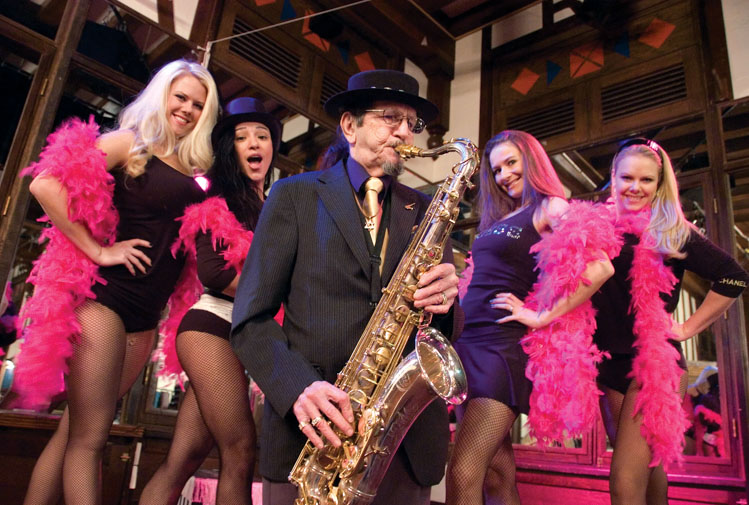 |
| Rapid City jazz musician Gary Bloomberg teamed up with Flaunt, an old-style Black Hills burlesque show, for a New Year's Eve performance. |
Editor’s Note: This story is revised from the March/April 2008 issue of South Dakota Magazine. To order a copy or to subscribe, call (800) 456-5117.
While other teenagers were listening to Madonna, Duran Duran and Michael Jackson in the 1980s, Jim Speirs rushed home from middle school in Rapid City to hear Doc Severinson’s Tonight Show Band or Maynard Ferguson. And when his classmates dreamed of being rock stars, Speirs practiced diligently on his trumpet with visions of becoming another Dizzy Gillespie or Miles Davis.
Speirs loves jazz — and he’s not alone. Scattered throughout South Dakota are musicians who play this uniquely American sound. They may be the next-door neighbor, farmer down the road or your office mate. Most local jazz musicians have other jobs.
Take, for example, Eric Knutson. He flies a fighter jet for the Air National Guard and plays trumpet. Jim Szana, jazz pianist, is a Pierre dentist. Cade Calder managed a Best Buy store, and Scott Olson is a farmer near Yankton; both play the trumpet. Speirs is executive director of Arts South Dakota. For these musicians and others, jazz is an avocation, not a vocation.
The 17 members of the South Dakota Jazz Orchestra demonstrate this passion over practicality. “We’re all-volunteer,” says Corliss Johnson. He’s a saxophone player and musical director for the group, which plays three or four performances a year. Johnson was head of SDSU’s music department and is now semi-retired. “Once in awhile we get paid,” he adds. But it’s seldom about money.
It wasn’t always that way. Musicians in South Dakota could once link up with a band and play ballrooms and dance halls throughout the state and make a living. Gary Bloomberg, a 94-year-old sax player in Rapid City, remembers those days. He still plays “a lot of solo gigs,” but recalls performing decades ago with the Bob Calame band and Happy Bill and All the Gang in ballrooms and on Watertown’s KWAT Radio and Sioux Falls’ KSOO.
Bloomberg is a master pool player and trick-shot artist, but he also plays with the School of Mines Jazz Band, and he helped form the Black Hills Dixieland Jazz Band.
A dapper dresser who is popular with the nightclub crowd in the Black Hills, Bloomberg occasionally traveled east on Interstate 90 now and then to perform at venues in Sioux Falls. One New Year’s Eve he teamed up with Flaunt, a burlesque act, to entertain at the Alex Johnson Hotel in Rapid City.
He wishes there were more venues. “There are a lot of good musicians here, but not many places to play,” he concedes. Even the School of Mines band plays just two concerts a year.
Soon after jazz was born in New Orleans more than a century ago, the music migrated up the Mississippi and into the Great Plains. In the early days there were plenty of places to perform. Jazz in South Dakota has a surprisingly rich history. It started in the heyday of the big band era in the late 1920s, when orchestras based in Omaha and Minneapolis would add South Dakota ballrooms to their tour schedules. Farmers and merchants, with wives or girlfriends, drove for miles to waltz, foxtrot and jitterbug to swing music.
While bands in urban areas could find work within a city’s limits, musicians in the Great Plains formed “territory bands.” The band members tied their instrument cases atop a bus and traveled from town to town. One of the most popular territory band leaders in the 1930s was Alphonso Trent who performed in Wyoming and the Dakotas, and spent much of his free time in Deadwood. There was also the Monthly Meadowlark Band from Ramona and dance orchestras lead by John Cavacas, in Watertown; Don Fejfar, Vermillion; Johnnie Arthur, Menno; Harry Eisele, Aberdeen; Tommy Matthews, White River; and Fats Carlson and Sonny Bronson in Sioux Falls.
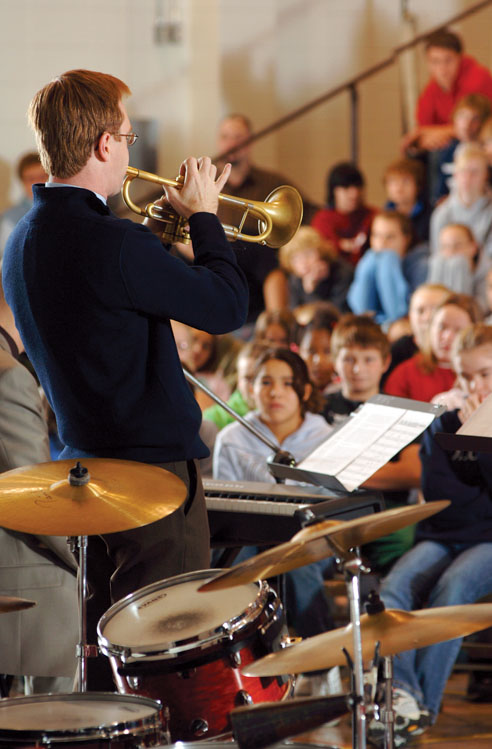 |
| Jim Speirs performs with the Jazz Diversity Project, a program designed to introduce South Dakota students to the history of jazz while cultivating an appreciation for the music. Photo by Greg Latza |
Ironically, while farmers and businessmen struggled to make a living during the depression era, musicians were making money. Nat Towles and his band from Omaha performed in South Dakota dance halls for $5 per band member per night. Playing six nights a week, they did well by 1930s standards, earning enough for food, shelter and new saxophone reeds. Of course, they had to play a steady array of dance tunes; most musicians preferred playing improvised jazz and considered the dance songs “Mickey music,” short for Mickey Mouse. But it paid the bills.
Big-name bands could avoid the Mickey music and perform in concert, often at Mitchell’s Corn Palace. The Jimmy Dorsey Band played there in 1938, and his brother, Tommy, performed nine years later. Other Corn Palace entertainers included Paul Whiteman (“King of Jazz”), Johnny “Scat” Davis, Harry James, Frankie Carle (“Wizard of the Keyboard”), Freddie Martin and Skitch Henderson. Lawrence Welk and his orchestra made multiple appearances at the Corn Palace, always to sell-out audiences.
Think of Welk and jazz may not come to mind. But he once considered himself a jazz musician; when he was a teenager he was a member of the Jazzy Junior Five. And in 1927 he planned to take his band, the Hotsy Totsy Boys, to the “mecca” for jazz, New Orleans. But he ran out of money in Yankton and got a job with WNAX Radio.
Welk blended the big band sound with pop, jazz and show tunes to create his unique “champagne music,” so named by a dancer in Pittsburgh who praised it as “light and bubbly.” Paul Schilf, executive director of the South Dakota Music Education Association and a former professor at Augustana University, says all serious musicians would like to blend sounds and establish a new sound, as Welk did. “He broke barriers and diversified,” says Schilf.
As the big band era ended in the 1950s, most South Dakotans turned to rock, pop and country. It was difficult to warm up to the new bebop and fusion jazz, which didn’t seem to have a melody. The so-called “club jazz” — at home in smoky night clubs and hotel lounges — is up-tempo, includes complex harmonies and improvisation, and was made popular by musicians like Gillespie, Coltrane, Thelonious Monk and Charlie Parker.
Still, some musicians and aficionados in South Dakota liked it. They lived an underground existence, jamming in their homes and scrounging what few recordings they could find in the back corners of music shops. Then on a warm day in 1988 a surprising number of fans and musicians — more than 250 — gathered at a backyard party in Sioux Falls. That day the seed was planted for the Sioux Falls Jazz and Blues Society and the city’s annual JazzFest, which was staged until 2019. Held the third weekend of July, the festival drew musicians and up to 100,000 fans from around the region to Sioux Falls’ Yankton Trail Park for live music on three stages.
JazzFest was one of the few successful, free (sponsored by local businesses and beer sales) music festivals in the country, and it became a major draw for the state. “We can’t compete with the [Sturgis motorcycle] rally or Mount Rushmore,” said Robert Joyce, the Jazz and Blues Society’s former executive director. “But we’re on a lot of people’s radar screen.” High school reunions were arranged around the fest, as well as an occasional wedding reception. Tourists made vacation plans around JazzFest. “People will call and ask about our gas prices and how far we are from Mount Rushmore or the [Terry] Redlin Center,” Joyce says.
When England’s BBC television network covered JazzFest, a reporter asked Joyce, “How come it’s held in South Dakota?” He answered, “It’s America’s music, and we’re in the heart of America.”
The festival drew big names in jazz, including a hometown boy, guitarist Mike Miller, who has performed with pianist Chick Corea and toured with comedian/singer Bette Midler. Miller grew up in Sioux Falls, as did Bruce Arnold, another guitar artist who made good. They met in New York, where Arnold has a recording studio, and produced a jazz CD titled “Two Guys from South Dakota.”
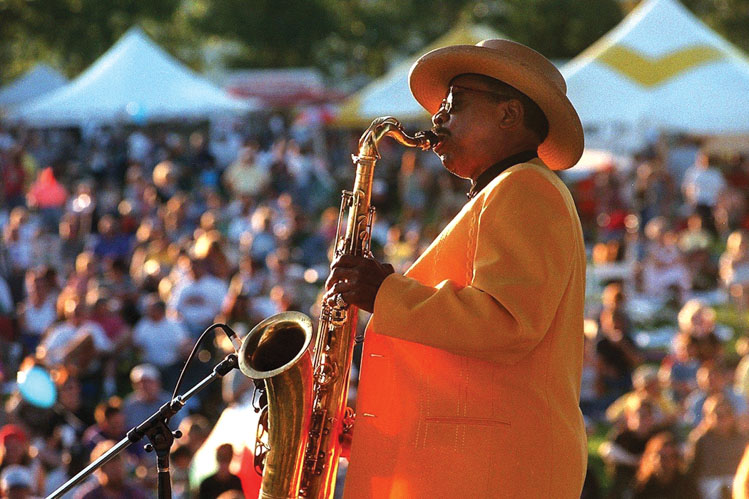 |
| Performers like Lynwood "Cookie" Cook helped make JazzFest one of America's top musical performances. The festival has since been replaced by Jazz Week, which includes a series of concerts and workshops throughout Sioux Falls. |
Sioux Falls has become the focal point for jazz in South Dakota. It’s near the center of the “I-29 corridor,” so called by musicians who see the stretch of four-lane between Brookings and Vermillion as a link for many who play and enjoy jazz. Places like the R Wine Bar and Severance Brewing host regular or pop-up performances throughout the year.
Pete Franklin, who opened Delmonico Grill in downtown Rapid City in 2007, hoped to bring jazz to West River’s biggest city. Shortly before the Christmas holiday he booked the Sugar Free Jazz Trio at his upscale Main Street restaurant. “The place was packed,” he said. “The atmosphere was like an Andy Warhol party.”
Musicians like Jim Szana are always looking for more opportunities to play. The keyboardist/dentist, along with bass player Lonnie Schumacher (a builder and handy man) and drummer Ron Woodburn (director of the Capital City Campus from 2004 to 2013 and now a member of its advisory board) perform as the Jim Szana Trio, largely in and around Pierre. Formerly called the Rochford Trio, the group is a garage band — literally. “Lonnie built a garage next to my house,” says Szana. “Now we have a place to practice, so we should be playing better.”
The trio cut a CD called “Good Evening Vietnam,” jazz renditions of patriotic songs. Imagine a jazz version of “Anchors Away” or “The Air Force Song.” Szana served in Vietnam and appreciated the state’s creation of the Vietnam Memorial in Pierre. “But I felt more had to be said,” he says, explaining the intent of the CD.
Szana’s trio performs about 30 times a year, mostly at weddings, fundraisers and legislative banquets in the capital city. They usually adhere to a song’s original melody. “Politicians like it because it’s music to talk to,” he says. Evening social events during legislative session in January and February provide the trio an added perk. “Politicians like to give ‘small speeches,’” he explains, “but their small speeches give us plenty of time to eat at the buffet table.”
The time may come when jazz musicians in South Dakota can be full-time entertainers, and when all types of jazz — Latin, fusion, bebop, big band — draw attentive crowds, just as they did eight decades ago. That’s what the Jazz and Blues Society hopes will result from its Jazz Diversity Project, an educational program in which a combo visits schools and plays music while also giving students an American history lesson.
“We talk about the civil rights movement and segregation in New Orleans, and how it relates to jazz,” says Speirs, a member of the combo. Since its creation in 2006, more than 60,000 students throughout the state have taken part in the program.
The Jazz and Blues Society also joins with Augustana University to sponsor the All-City Jazz Ensemble, featuring about 17 young musicians from Sioux Falls high schools in a jazz concert each autumn. In the spring the program works with middle school students.
Dennis McDermott, retired band director at Aberdeen Central High School and a member of a jazz quintet that plays on occasion at the Ward Plaza Bar and Grill, also wants young South Dakotans to appreciate jazz. He long coordinated All-State Jazz Band, an event comparable to the All-State Band competition. Students from around the state audition to play in a jazz orchestra or combo and have a chance to learn from an invited jazz artist.
Many of the students will no doubt play jazz the rest of their lives. Some may even make a living at it, maybe even here in the heart of America.


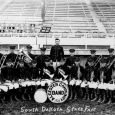

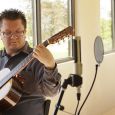
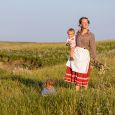
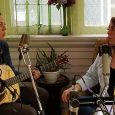
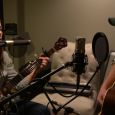


Comments